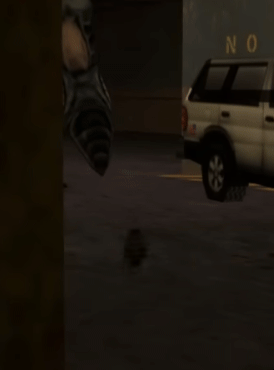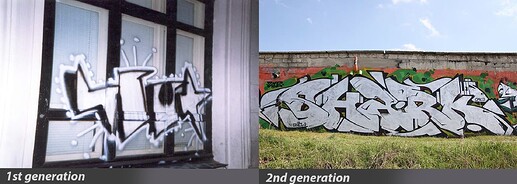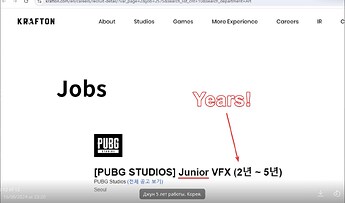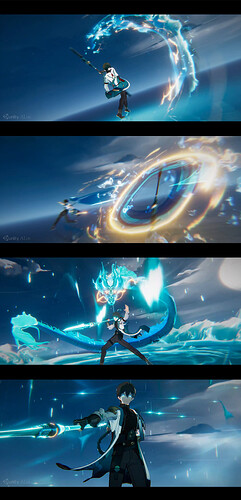I am 26, and I am passionate about Real-Time VFX for games.
Don’t have close connections with the pioneers of VFX, but I’ll try to imagine their daily mundane existence. So, here we are in the 1997, working on a project like, say, Half-Life. We’ve been tasked with creating a simple explosion. There are no YouTube tutorials, no proper software, no technical artists (since we are the tech artists, programmers, and artists all in one), no references, no assets, and, of course, no time. We’re shackled by technical limitations: can use only 2 sprites and 1 mesh with a maximum of 6 triangles for the entire effect. The interface for this work barely exists. A blinking underscore on a black console screen is all that’s before us—a void of creative freedom, experiments, and sleepless nights.
And so, after mastering a couple of programming languages (maybe even writing a few of our own), after getting blisters from rewinding the VHS tape spools with explosions from Terminator 2 back to the beginning, after thousands of tests and failures—finally! We’ve managed to create some kind of flame that doesn’t look like soap.

It’s like a homunculus—still horrendous, but alive, and we made it. Now we have a technical solution for the current project, one that will be obsolete and irrelevant within a year, and we’ll have to invent all these wonders again.
Some will remember these times with nostalgia and romance, sighing, “Man, those were the days!” But as a representative of the younger generation, all I have to say is, “Man, this sucks!”
I created an explosion in EmberGen and integrated it into Unreal Engine. From scratch. It took me two days to learn EmberGen.

Not two month, not two years—just two days, because…
I stand on the shoulders of Titans.
Tens of thousands of minds have worked for decades, making my journey into VFX easier. My heart fills with love at the realization of how effortlessly one can master a profession today.
1. Access to high-quality educational materials is unprecedented.
∙ Free online tutorials often surpass traditional university programs, while universities struggle to keep up with the rapid development of CG.
∙ The presence of “old school” contacts who are eager to help the younger generation accelerates learning exponentially. When the pioneers were solitary warriors in the vastness of space.
∙ The very possibility of reaching out to anyone thanks to the rise of social media and getting a response is equally incredible.
2. Tools: Simpler and More Powerful
∙ My Blender3D opens in 0.5 seconds, and my simulations in Real-Time render in half a minute. I don’t need thirty nodes to create a cube in Houdini (though I’ll have to master it eventually).
∙ Yes, I still need to think about optimization, but I can drop a model with a thousand triangles into a Mesh Renderer in Niagara and it will be fine—an unimaginable luxury for past artists, given that today’s user hardware is more powerful.
∙ I can already generate some textures in seconds thanks to AI. In a couple of years, the same will be true for 3D models.
∙ Internet access is affordable, and I made enough for my 4070 Super at 12gb in just two weeks of a part-time work. In 2003 I could have bought an ATI Radeon 9800 XT at 256 mb for the same amount.
Innovation and creativity are surging to new heights like a tsunami, and I feel like a surfer riding the wave.
The Phenomenon of Generational Shifts
I am from Ukraine. Living in Eastern Europe, Western hip-hop culture only reached my area in the early 2000s. During my youth, immersed in graffiti, I noticed something interesting: the pioneers of the Ukrainian scene were isolated from information coming from the world—there were no magazines or videos—which led them to reinvent font compositions “from scratch.” The result was unique but much less appealing compared to what was being done in New York.
Fast forward 18 years, with access to information, an increase in its volume, and economic growth (which allowed for the purchase of higher-quality paint), local artists in my city, putting in the same effort to develop their skills, began creating significantly better work. For example:
Interestingly, due to habit, the styles of the “old guard” did not change much over the years, becoming morally “outdated.” From personal experience, 1 out of 5 graffiti writers from the pioneering days radically changed their styles based on newly acquired information resources, either following or setting trends.
I have noticed that older generations develop habits that they most often never change. That there is a limit to the beauty they can comprehend when they are young. After spending decades mastering a skill, someone in a new generation can reach the same level ten, twenty or even a hundred times faster, thanks to the advances carried out by the same “old school”.
—————————————————————————————————————————————
You guessed it—this principle applies to CG as well, just as it does in any industry. For example, Disney continued to use hand-drawn animation (the paper, Séan!) even after digital tools became widely available. Disney fully transitioned from hand-drawn animation only in the early 2000s, despite having access to advanced software and graphic tablets for many years prior.
This wasn’t because the technology wasn’t ready, but because of organizational inertia. Due to the habits of older generations, many of whom did not acquire skills with more efficient new tools. And that’s the way it should be.
The same applies to AI. Yes, AI could replace 80% of 2D animators and artists right now, but the older generation of managers simply won’t adopt it for many years. The specialists who will actively use it are still in training.
The old generation might even be counterproductive by creating environments where the youth must learn outdated software and it… fades away.
So, how does generational turnover relate to Real-Time VFX? It’s simple: today, right now, we are entering an era of transformation!
Besides the aforementioned benefits, such as access to information and simpler software, the key factor is the elevated visual standard. Take, for instance, the Asian school of Real-Time VFX. In the East, there are significantly more effect artists due to the size of the market—say, 2-4 times more. Their requirements for junior artists are equivalent to those for mid-level+ artists here.
The Asian school of visual effects demonstrates a high level of mastery, distinctly different from the approaches in Europe and America. The Eastern world effects annihilate, obliterate, turning our effects to dust. I am almost embarrassed to search “real-time VFX” on ArtStation; it literally spoils the taste against the backdrop of these professionals. Just look at one of the many examples.
It’s inspiring that achieving such a level is now much easier, as we have both the elevated visual standards and courses from the same guys. To land my first job, I literally need to be a semi-junior by Asian market standards! (It’s a bit more complicated with Unreal, but it’s definitely true for Unity.) It’s a marvel, folks!
Tens of thousands have labored before me: bending their backs, creating visual masterpieces, writing pristine code, or performing pitching miracles in business meetings, and the fruits of their labor are now available to us! Our market is growing and there is a shortage of specialists.
Our task today is simple — to be inspired by the best visual standards and integrate the best practices into our projects, to advance high quality visuals on a global scale.
If you have ever considered a career in Real-Time VFX, now is the time to start! We have the tools, knowledge, and desire to create what seemed impossible just a few years ago. We are not just riding the wave—we are creating it ourselves!




